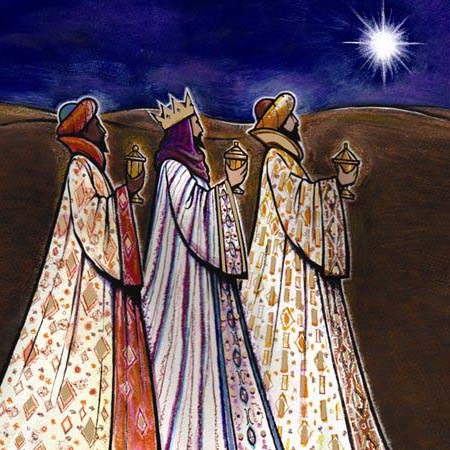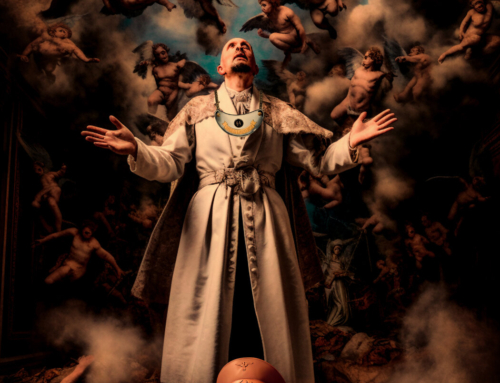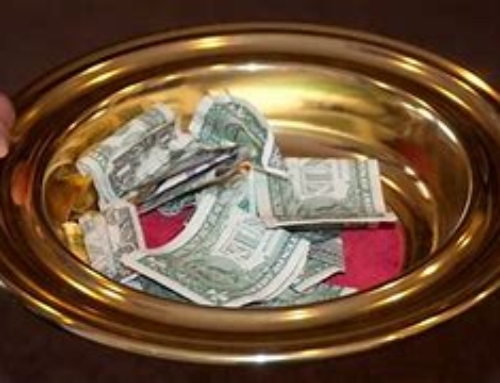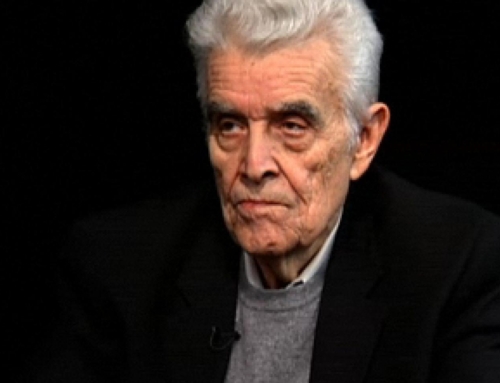More and more I can’t stand the sentimentalization of Christmas–and the sentimentalization of Christianity.
We’ve turned the whole thing into some sort of sweet little magical mystery tour, and the modernist Biblical scholars have contributed to this as much as all the tacky commercialization.
Let me explain:
I was dipping into John Dominic Crossan and Marcus Borg’s book The First Christmas-What the Gospels Really Teach About Jesus’ Birth, and realized again why I loathe books like this.
If you are not familiar with the book, Crossan and Borg essentially take the birth narratives and turn them into pretty parables. The say in that sly way modernists have, “we’re not really saying the gospel stories didn’t happen, but that’s not our concern. We are concerned to focus on what they mean.
They then go on to say that the story of the magi, the shepherds, the birth in Bethlehem, and all the other stories about Jesus’ birth were meant to be understood as parables. In other words, they are just pretty stories with a spiritual meaning–sort of like Aesop’s fables.
This approach has infected a huge amount of Christian preaching and influenced the understanding of the gospels among a couple of generations of ministers and priests–both Protestant and Catholic.
Let me explain why this is so insidious why, indeed, it is the smoke of Satan itself.
Here’s the sort of garbage I’m talking about: take the magi story for example. Avoiding any question of the story being historical, the pretty parable interpreters will say, “So this story teaches us that each one of us must go on an adventure to find the truth! Furthermore if that adventure is to be successful we must each of us follow the guidance from above, and let us all then wish upon a star so we will find the young child within each of our hearts.”
Blah. I hate that stuff. It tames the lion. It waters down the wine. It turns the faith into a greeting card.
I hate it because in neglecting–intentionally neglecting– the historical aspect of the story they are silently saying that it really didn’t happen. Indeed, when pressed they will say that the story of the magi was a pious fiction. Not content with that they will (when pressed) say that they don’t think much, if any of the gospel story is historical.
However, they don’t actually come out and say that. A whole slew of liberal “Christians” will stand up and lead Christmas services talking about the Blessed Virgin and the shepherds and the magi and the wonderful tale, but all along they don’t believe it really happened like that. Liars and hypocrites.
Instead they say, “So let us all open our hearts and minds to the message of the angels which is just as real in our world today as it was then. The message is ‘Peace and goodwill to all! All are welcome!”
Now what this does in the long run is even more insidious and disastrous for the Christian Church. Eventually the whole gospel account is treated as no more than a pretty parable or a story to be mined for preaching points.
All the stories are turned into little homely homely homilies while the liberal ministers and priests quietly forget to admit to their people that they don’t think the events themselves ever happened.
In the long run, the gospel is turned into a pretty parable. It is turned into a lesson for life. It is turned into a series of preaching points or sweet little lessons about how to be nicer people and make the world a better place.
When that happens the gospel itself has been emasculated.
The gospels are NOT pretty parables. The gospels recount the real historical events of God’s son Jesus Christ entering this world to redeem this world and deliver us from the slavery of sin by his atoning death on the cross and his glorious resurrection. They tell how you can only be saved from the real threat of hell by having faith in Jesus Christ, Son of God and Son of Mary.
These are the real historical events of the world’s salvation–they are not a pretty myth along the lines of “even after his tragic death the wonderful teachings of Jesus continued to be loved and followed by his loyal disciples.” These are not just preaching points about “so let us all hope that something good from our own lives will continue after our death.”
The red blooded gospel recounts the events of the world’s salvation and pretty parables not only won’t do–they are a false gospel–a subtle and insidious lie from the Father of Lies.
This is why I wrote Mystery of the Magi about the historical truth of the magi story–to insist that this was not a pious fairy tale about mystical wizards from a faraway land who wished upon a star like the blue fairy in Pinocchio.
They were real people in a real context who really visited a little farming community called Bethlehem to pay homage to a little child they believed was the Prince of Peace.







The star of Bethlehem might be taken as one of these parables, but the DVD under the same name studied and created by Frederick Larson seems to give very good scientific evidence that the star was real. Fr Longenecker have you seen the DVD and if so do you have any comments.
Yes. I like Larson’s theory, but it competes with two or three other theories. All of them have strengths, but also have weaknesses. I have outlined the different theories in that chapter of my book Mystery of the Magi.